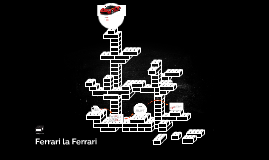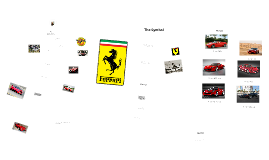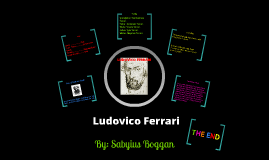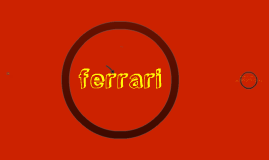Ferrari
Transcript: Ferrari is an italian sports car manufactured based in Maranello, Italy and it was founded by Enzo Ferrari in 1928 with the name Scuderia Ferrari. Only in 1947 was changed to Ferrari. History Enzo never intended too build cars when he formed Scuderia Ferrari. Scuderia was only a sponser for amaeur drivers. Enzo prepared many drivers in Alfa Romeo and in 1938 he was hired by Alfa Romeo to head their motor racing department. In 1941, Alfa Romeo was confiscated by the fascist government of Benito Mussolini as part of the Axis Powers' war effort. Enzo Ferrari's division was prohibited by contract from racing for four years, the Scuderia briefly became Auto Avio Costruzioni Ferrari, which produced machine tools and aircraft accessories. Ferrari did in fact produce one race car, the Tipo 815, in the non-competition period. It was the first actual Ferrari car that debuted at the 1940 Mille Miglia. In 1943 the Ferrari factory moved to Maranello. The factory was bombed by the Allies in 1944 and rebuilt in 1946, after the war ended, and included a works for road car production. The first Ferrari road car was the 1947 125 S; Enzo Ferrari reluctantly built and sold his automobiles to fund Scuderia Ferrari. In 1988, Enzo Ferrari oversaw the launch of the Ferrari F40, the last new Ferrari to be launched before his death later that year, and arguably one of the most famous supercars ever made. From 2002 to 2004, Ferrari introduced the Enzo, its fastest model at the time, in honor of the company's founder: Enzo Ferrari. It was restricted to only the most wealthy automobile enthusiasts, however, as each one cost $1.8 million. On 17 May 2009 in Maranello, Italy, a 1957 250 Testa Rossa was auctioned for $12.1 million — a world record at that time for the most expensive car ever sold at an auction. The Symbol The famous symbol of the Ferrari race team is the Cavallino Rampante ("prancing horse") black prancing stallion on a yellow shield, usually with the letters S F (for Scuderia Ferrari), with three stripes of green, white and red (the Italian national colors) at the top. On 17 June 1923, Enzo Ferrari won a race at the Savio track in Ravenna where he met the Countess Paolina, mother of Count Francesco Baracca, an ace of the Italian air force and national hero of World War I, who used to paint a horse on the side of his planes. The Countess asked Enzo to use this horse on his cars, suggesting that it would bring him good luck. The original "prancing horse" on Baracca's airplane was painted in red on a white cloud-like shape, but Ferrari chose to have the horse in black (as it had been painted as a sign of grief on Baracca's squadron planes after the pilot was killed in action) and he added a canary yellow background as this is the color of the city's flag of Modena, his birthplace. The Ferrari horse was, from the very beginning, markedly different from the Baracca horse in most details, the most noticeable being the tail that in the original Baracca version was pointing downward. Ferrari has used the cavallino rampante on official company stationery since 1929. The Cars: Ferrari F430 Ferrari FF Ferrari 485 Italia Ferrari 599 Ferrari California Ferrari Daytona The End Work made by Henrique Branquinho.

















